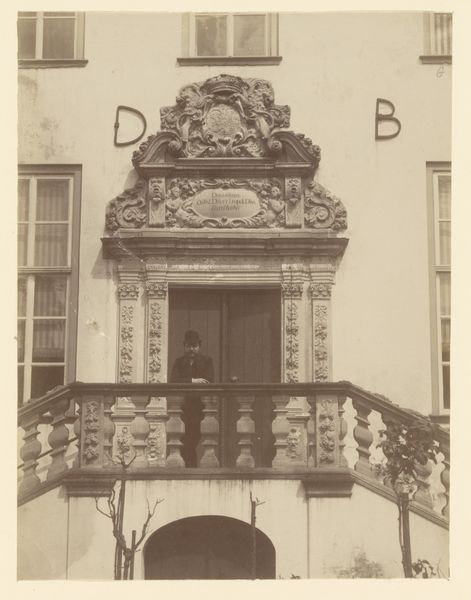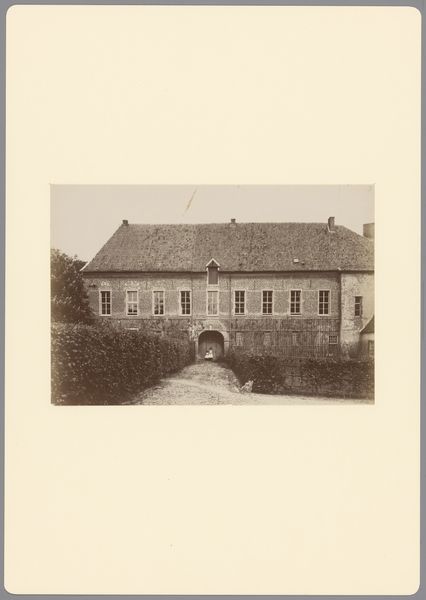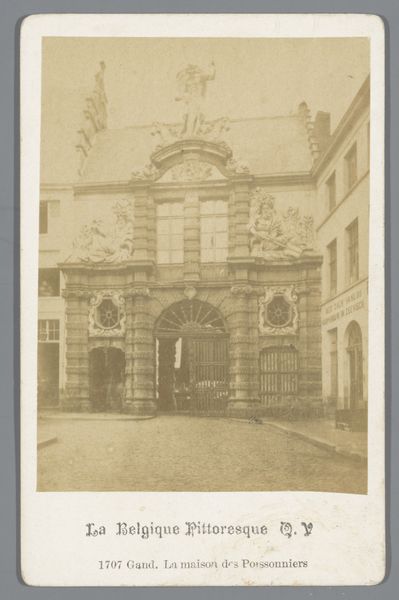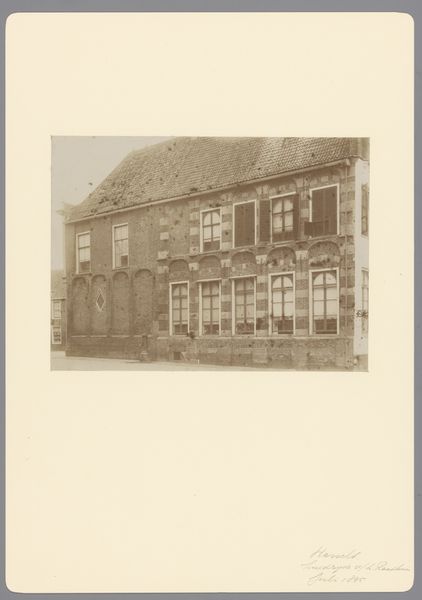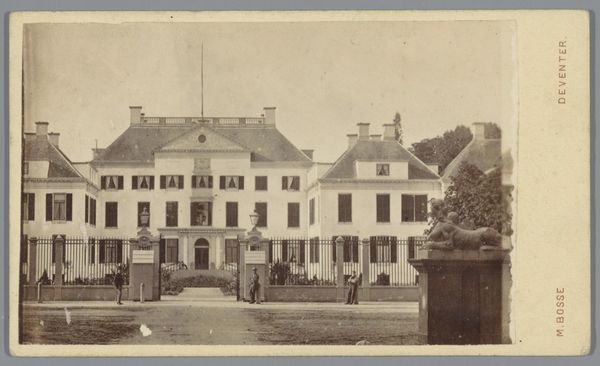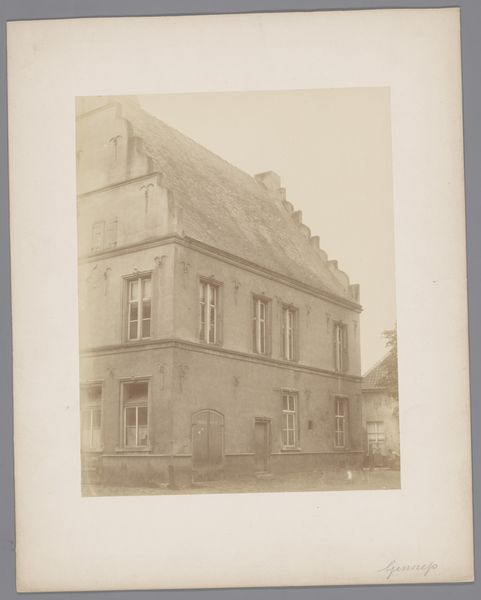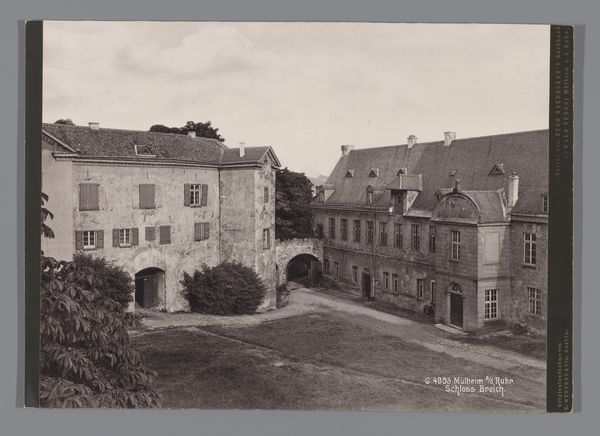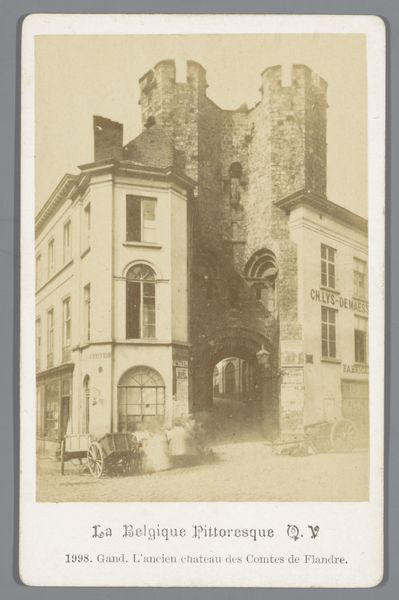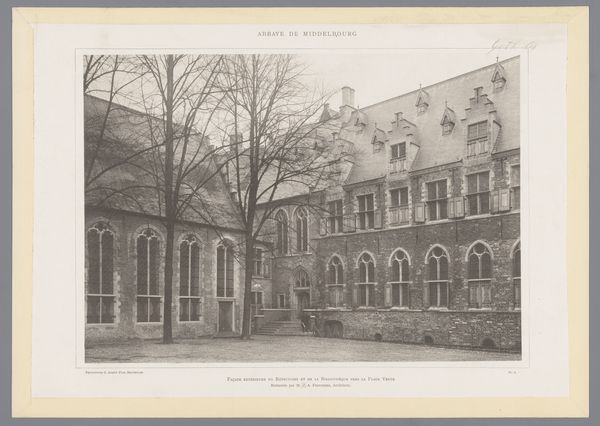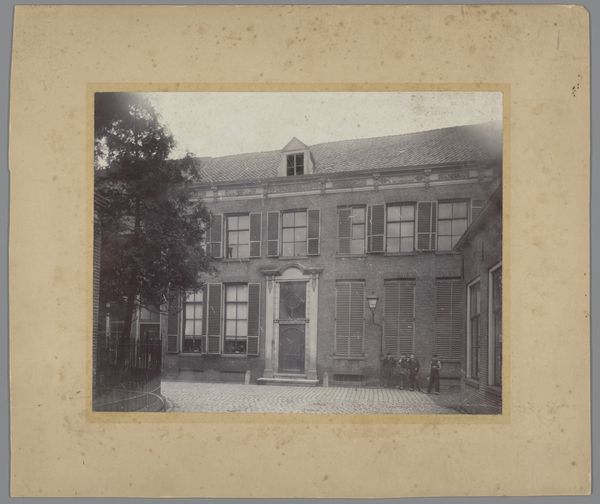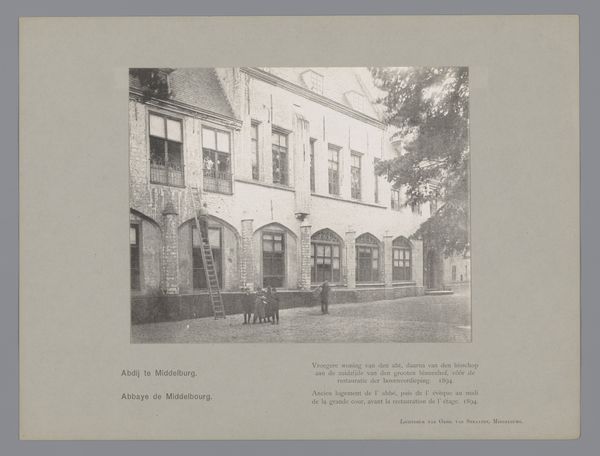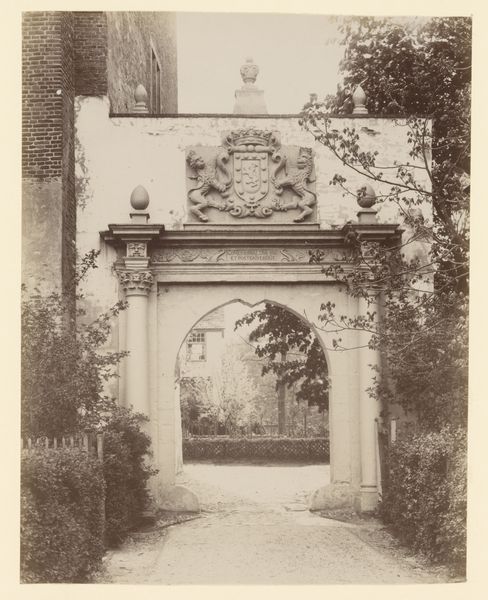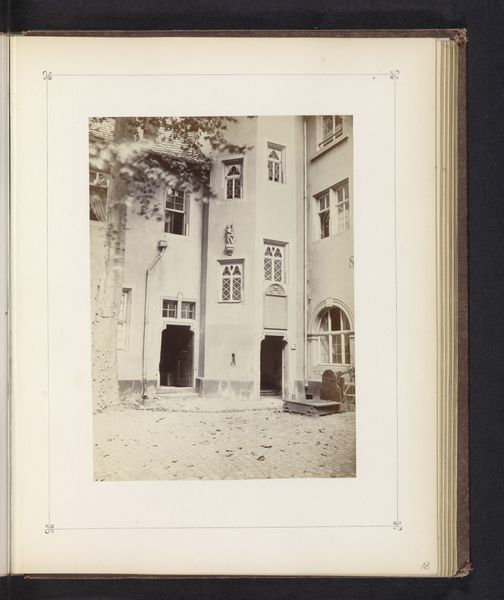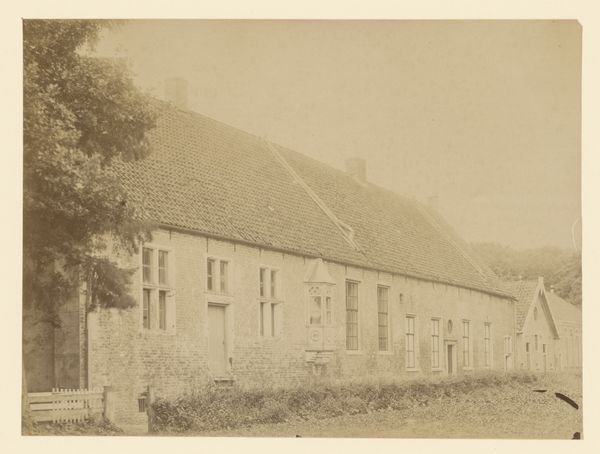
Dimensions: height 166 mm, width 228 mm
Copyright: Rijks Museum: Open Domain
This old photograph depicts the main staircase and entrance of Huis Bergh in 's Heerenberg. Above the doorway, notice the intricate stone carving, a heraldic display. This motif is deeply rooted in European history, serving as a family's visual signature, a claim to lineage and status. Such symbols, like the family crest above the door, echo through time. We see them in medieval tapestries, painted shields, and illuminated manuscripts—each instance a reinscription of power and identity. Think of the lion, the eagle, the fleur-de-lis; these symbols recur across centuries, each time imbued with new meanings and associations, yet always tied to notions of authority. It’s like a game of passing down the meaning through generations, unconsciously influenced by collective memory. Consider how the very act of displaying such emblems taps into deep psychological needs for belonging and recognition. These symbols engage us on a primal level, stirring feelings of awe and reverence. Symbols never truly vanish; they resurface, evolve, and find new life in each era.
Comments
No comments
Be the first to comment and join the conversation on the ultimate creative platform.
